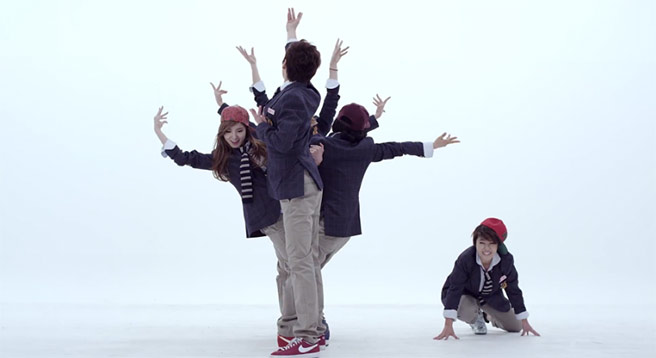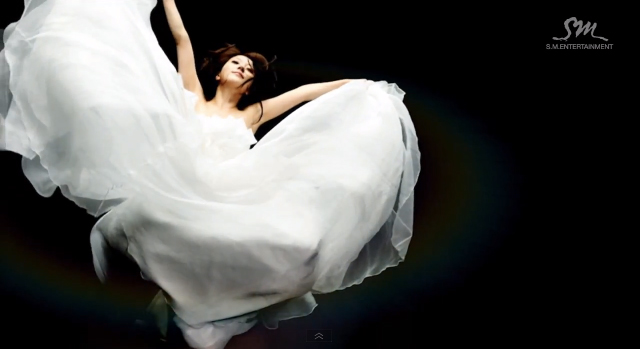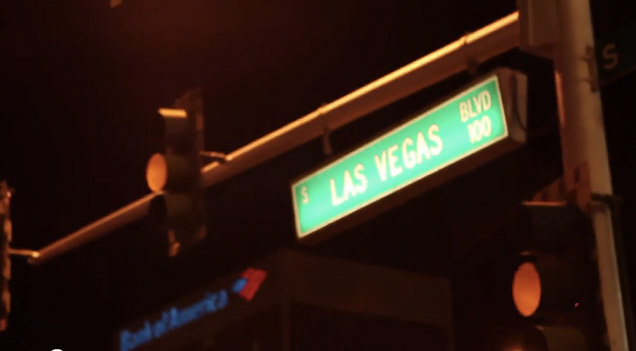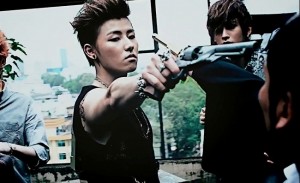 There are a whole lot of guns in K-pop MVs as of late. From femme fatales to inept pirates, sexy spies and cute bank robbers, the trend exploded in 2012 and doesn’t seem to be slowing down given the recent release of B.A.P’s “One Shot.”
There are a whole lot of guns in K-pop MVs as of late. From femme fatales to inept pirates, sexy spies and cute bank robbers, the trend exploded in 2012 and doesn’t seem to be slowing down given the recent release of B.A.P’s “One Shot.”
While most of us probably are not shocked to see guns in media, the sudden upswing of K-pop idols wielding them clashes with their usual non-threatening image. In one way, it’s not surprising that companies would include guns in videos, because the added high-drama will set their groups apart from the norm. However, the unrealistic, almost mindless way K-pop idols handle guns perpetuates a myth that guns are sexy, cool and ultimately, not dangerous, which impacts social acceptance of gun use on the whole.
This is not exclusive of K-pop MVs, of course. The debate over guns and violence in the media has been going on for decades, most recently in the US due to the horrific killings in Colorado and Connecticut. US movies, TV, video games, etc., often show guns in a glorified fashion, but the US also has a complicated history regarding guns and individual rights. K-pop stems from a country with very little gun culture, which is why the recent onslaught of gun-related K-pop videos is surprising.
In regards to gun laws in South Korea, the short of it is: as a regular civilian, it is very difficult to own or carry a gun. In order to own a gun, a person must be licensed, and have a genuine reason to own one, usually related to a profession: like being a bodyguard, shooting athlete, etc. Things like paintball and prop guns are also heavily regulated. However, it should be noted that adult men will learn to shoot a gun during mandatory military service, making guns part of an organization rather than an individual’s property.
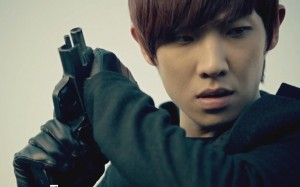 Due to these laws, there is very little debate about individuals owning guns, and consequently limited gun culture in South Korea. Real guns are associated with the military and law enforcement, and any other exposure to guns is pure fantasy, through media. K-pop follows suit: the characters who use guns in the videos are fantasy characters; they’re spies, gangsters, even people with superhuman powers, like Lee Joon and his bullet bending in MBLAQ’s “This is War.” As part of larger mass media, one way to view gun use in K-pop is that it’s simply reflective of other media.
Due to these laws, there is very little debate about individuals owning guns, and consequently limited gun culture in South Korea. Real guns are associated with the military and law enforcement, and any other exposure to guns is pure fantasy, through media. K-pop follows suit: the characters who use guns in the videos are fantasy characters; they’re spies, gangsters, even people with superhuman powers, like Lee Joon and his bullet bending in MBLAQ’s “This is War.” As part of larger mass media, one way to view gun use in K-pop is that it’s simply reflective of other media.
So why are all the K-pop companies suddenly hopping on the gun bandwagon?
It boils down to attention, both within the genre and global mass media. Since guns rarely have to do with the songs themselves, except as sound effects, they are used as eye-catching visuals. And as we’ve looked at before, visual concept is key. It’s what distinguishes one group from the rest, and can also signal a group’s growth. Gun use is often paired with violence, dark outfits and even sexuality, which could be an attempt at a darker, more aggressive image for a traditionally sweet group, or to distinguish a debut from a myriad of rookies. For example, 2011 saw a sea of debuts, therefore B.A.P ran out of the gate in 2012 with powerful, aggressive music and an adrenaline-filled MV that culminated in symbolically “shooting” Zelo at the end.
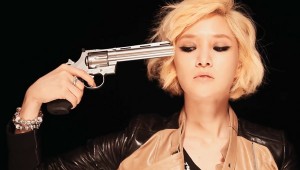 K-pop is also a cultural export, much like Hollywood films and TV, and it’s arguable that the industry mimics gun use from other countries’ media in order to compete in a global market. Guns are used in K-pop as an homage to cinematic genres, thus making MVs more like mini-movies. Secret’s “Poison” is a nod to film noir, while Hyunseung and Hyuna’s “Trouble Maker” references spy movies. This can increase the quality of an MV, make it more interesting to watch and garner attention. Since we accept guns in blockbuster films, we also accept them in K-pop videos that look like films.
K-pop is also a cultural export, much like Hollywood films and TV, and it’s arguable that the industry mimics gun use from other countries’ media in order to compete in a global market. Guns are used in K-pop as an homage to cinematic genres, thus making MVs more like mini-movies. Secret’s “Poison” is a nod to film noir, while Hyunseung and Hyuna’s “Trouble Maker” references spy movies. This can increase the quality of an MV, make it more interesting to watch and garner attention. Since we accept guns in blockbuster films, we also accept them in K-pop videos that look like films.
Of course, we can’t forget that guns symbolize power, and sometimes are included in videos purely for nonsensical shock and awe, a la 2NE1’s “I Am the Best.” However, none of these situations apply to the real world, making gun use in K-pop MVs ungrounded from reality.
K-pop takes this unreality a step further in the juvenile and superficial way it uses guns. Many have noticed that idols literally fling guns around in MVs, making their use wholly unbelievable. No detective is going to scratch the back of his head with his gun like the one in “Poison.” Guns don’t get smacked out of gangsters’ hands like in Block B’s “Nillili Mambo.” Dal Shabet in “Mr. Bang Bang” were cutesy and klutzy, making them the most unsafe gun users ever. These are good for a laugh, but also get rid of consequences. While there are dramatic MVs with guns, any real consequences are expunged by slick cinematography so as to remove the messiness and horror of violence. By discarding danger, K-pop still retains its non-threatening image. Idols, after all, are supposed to be likable, even when shooting a gun.
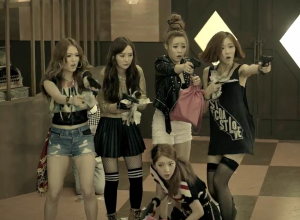 Unfortunately, this disconnects us from the reality of firearms, which dangerously affects the acceptance of gun use. This is not to say that gun portrayal in K-pop and other media makes a person want to use a gun; people are accountable for their own actions, and most can distinguish between reality and fantasy. We know they are props, but the image is supposed to be of a real gun. However, unlike in K-pop where guns are treated like toys, real guns are difficult to control and kill people very easily. In the real world, an emotionally agitated person with a gun fires it, they are not taken out by fists. While there is a place for action, spy, or war stories in media, it is important to think intelligently about violence and its consequences. The more unreal MVs make gun use, the more accepted it becomes in our psyche, and the more we don’t think about it in a social context.
Unfortunately, this disconnects us from the reality of firearms, which dangerously affects the acceptance of gun use. This is not to say that gun portrayal in K-pop and other media makes a person want to use a gun; people are accountable for their own actions, and most can distinguish between reality and fantasy. We know they are props, but the image is supposed to be of a real gun. However, unlike in K-pop where guns are treated like toys, real guns are difficult to control and kill people very easily. In the real world, an emotionally agitated person with a gun fires it, they are not taken out by fists. While there is a place for action, spy, or war stories in media, it is important to think intelligently about violence and its consequences. The more unreal MVs make gun use, the more accepted it becomes in our psyche, and the more we don’t think about it in a social context.
As a drop in the global media bucket, it might be too much to ask for K-pop to consider gun use in an intelligent way, when the genre is ultimately known for fluffy content. However, this doesn’t mean we should stop thinking critically about it. As these videos take up a significant amount of our brain time and are the “face” of the group for the rest of the world, it is important for us to think about, if only to distinguish between the real and unreal.
I know our readers are from all over the globe, and so I open it to you: How does gun use in K-pop MVs make you feel?
(GunPolicy.org, Ask A Korean!, ABC News. Images via: Pledis Entertainment, Stardom Entertainment, J. Tune Camp, B2M Entertainment, Happy Face Entertainment)
